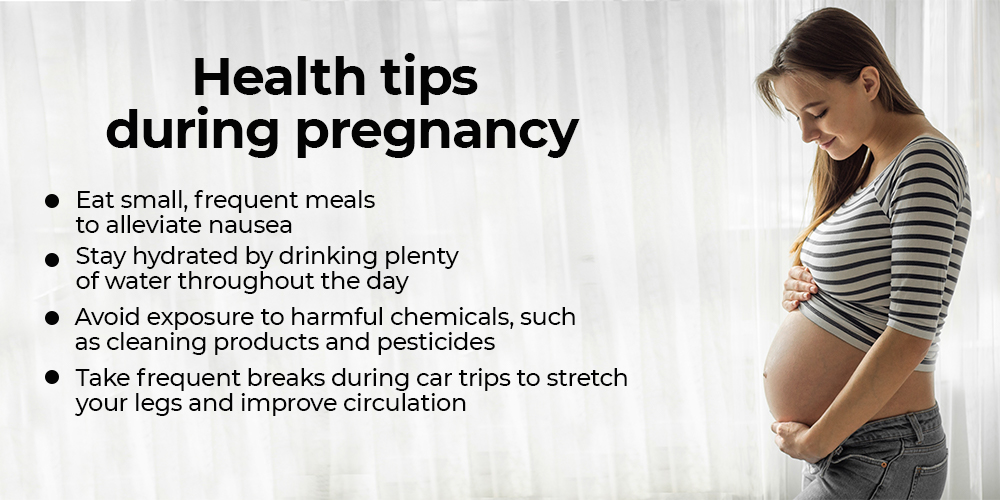During pregnancy, a balanced and nutritious diet is crucial for the mother’s and baby’s health and well-being. A pregnancy monthly diet chart helps ensure that expectant mothers meet their nutritional needs at every stage of their pregnancy journey. This comprehensive guide will explore the importance of a structured monthly diet plan, providing insights and practical tips tailored to each trimester.
First Trimester Diet: Nutritional Foundations
The first trimester marks the beginning of a remarkable journey of growth spurts during pregnancy. It’s essential to focus on nutrient-dense foods to support this early stage of pregnancy. A sample Pregnancy Monthly Diet Chart for the first three months may include:
- Breakfast: Whole-grain toast with avocado and poached eggs, fresh orange juice, and chia seed pudding topped with berries.
- Mid-Morning Snack: Raisins for a quick energy boost, Greek yogurt with honey and sliced almonds.
- Lunch: Grilled chicken salad with strawberries, quinoa and vegetable stir-fry.
- Afternoon Snack: Carrot sticks with hummus, trail mix with dried fruits and nuts.
- Dinner: Baked salmon with steamed broccoli, brown rice, tofu, and vegetable curry.
These meals provide essential nutrients such as folate, iron, protein, and vitamins necessary for fetal development and maternal health during the first trimester.
Second Trimester Diet: Nourishing Growth
As the pregnancy progresses into the second trimester, many women experience relief from early pregnancy symptoms and may have increased energy levels. This trimester calls for a focus on foods that support fetal growth and maternal well-being, including those recommended in the Brewers pregnancy diet paln A monthly diet plan for the fourth, fifth, and sixth months might include:
- Breakfast: Vegan smoothie with spinach, banana, almond milk, and flaxseeds, whole-grain toast with almond butter.
- Mid-Morning Snack: Fresh fruit salad with chia seeds, and and nuts such as almonds or walnuts.
- Lunch: Quinoa salad with grilled tofu, lentil soup with whole-grain bread.
- Afternoon Snack: Greek yogurt with granola and cherries, sliced apples with peanut butter.
- Dinner: Grilled chicken with roasted sweet potatoes, vegetable lasagna with whole-wheat noodles.
These meals provide a balance of carbohydrates, protein, healthy fats, and fiber to support the nutritional needs of both the mother and the growing baby.
Third Trimester Diet: Nourishing the Home Stretch
In the final trimester of pregnancy, the nutritional demands on the mother’s body increase as the baby undergoing rapid growth and development. A Pregnancy Monthly Diet Chart plan for the seventh, eighth, and ninth months may include:
- Breakfast: Oatmeal with sliced bananas and honey, scrambled eggs with spinach, and whole-grain toast.
- Mid-Morning Snack: Trail mix with dried fruits and nuts, yogurt parfait with granola, and mixed berries.
- Lunch: Salmon salad with mixed greens, brown rice, and vegetable stir-fry.
- Afternoon Snack: Whole-grain crackers with hummus, fresh watermelon or cantaloupe.
- Dinner: Lean beef stir-fry with bell peppers and broccoli, vegetarian chili with beans and tomatoes.
These meals provide essential nutrients such as calcium, vitamin D, omega-3 fatty acids, and antioxidants to support fetal development and prepare the mother’s body for childbirth.
Common Nutritional Concerns: Addressing Challenges
Throughout pregnancy, expectant mothers may encounter common dietary concerns such as cravings, aversions, and nausea. It’s essential to listen to your body and make adjustments to your diet as needed. Here are some tips for managing these challenges:
- Cravings: Incorporate cravings into your diet in moderation, opting for healthier alternatives when possible.
- Aversions: Find alternative foods that provide similar nutritional benefits to those you’re averse to.
- Nausea: Eat small, frequent meals and choose bland, easily digestible foods to ease nausea.
Recommended Food Groups: Building Blocks of Nutrition
A balanced pregnancy diet plan should include a variety of food groups to ensure adequate intake of essential nutrients. Here are the key food groups to incorporate into your monthly pregnancy diet plan:
- Fruits and Vegetables: Rich in vitamins, minerals, and antioxidants.
- Whole Grains: Provide fiber and essential nutrients.
- Protein: Essential for fetal growth and maternal tissue repair.
- Dairy and Alternatives: Important for calcium and vitamin D.
- Healthy Fats: Support fetal brain development and hormonal balance.
Hydration and Fluid Intake: Staying Nourished
Staying hydrated is crucial during pregnancy to support increased fluid volume and ensure optimal body function. Here are some tips for staying hydrated:
- Drink plenty of water throughout the day.
- Consume hydrating foods such as fruits and vegetables.
- Monitor urine color to gauge hydration status.
Meal Prep for Pregnancy and Planning: Setting Yourself Up for Success
Meal planning and preparation are essential for maintaining a healthy pregnancy diet, especially when juggling busy schedules. Here are some practical strategies:
- Plan meals and snacks ahead of time.
- Batch cook and freeze meals for convenience.
- Use time-saving appliances like slow cookers and pressure cookers.
Supplements and Vitamins: Enhancing Nutrition
In addition to a healthy diet, prenatal supplements, and vitamins play a crucial role in ensuring adequate nutrient intake during pregnancy. Here are some essential supplements:
- Folic acid: Prevents neural tube defects.
- Iron: Prevents anemia and supports oxygen transport.
- Calcium: Supports bone and teeth development.
- Vitamin D: Essential for bone health and immune function.
- Omega-3 fatty acids: Support brain and eye development.
Foods to Avoid: Protecting Your Health
During pregnancy, it’s essential to avoid certain foods and beverages that may pose a risk to the mother and the baby. Here explore with vikson care some foods and beverages to steer clear of:
- Raw or undercooked meats, eggs, and seafood.
- Unpasteurized dairy products.
- High-mercury fish.
- Alcohol and caffeine.
Adjusting the Diet for Special Circumstances: Individualized Care
Every pregnancy is unique, and certain health conditions or dietary preferences may necessitate adjustments to the standard pregnancy diet. Here are some considerations:
- Gestational diabetes: Monitor carbohydrate intake and blood sugar levels.
- Food allergies or intolerances: Find safe alternatives and ensure nutritional needs are met.
- Vegetarian or vegan diets: Pay attention to protein, iron, calcium, vitamin B12, and omega-3 intake.
Seeking Professional Guidance: Partnering with Your Healthcare Team
While this guide provides valuable information and practical tips for maintaining a healthy pregnancy diet, it’s essential to seek professional guidance from healthcare providers or nutritionists for personalized dietary advice. Regular prenatal care and consultations can help ensure the best outcomes for both mother and baby.
Conclusion: Nurturing Yourself and Your Baby
In conclusion, a pregnancy monthly diet chart is a valuable tool for expectant mothers to ensure they’re meeting their nutritional needs throughout each stage of pregnancy. By focusing on nutrient-dense foods, staying hydrated, and incorporating practical strategies for meal planning and preparation, you can support your health and the health of your baby during this transformative journey. Remember to listen to your body, seek professional guidance when needed, and celebrate the nourishing power.
FAQ’S
When considering the best cereal to eat while pregnant, prioritize options fortified with essential nutrients like folic acid, iron, and calcium. Opt for whole grain varieties with low sugar content for optimal nutritional benefits. Choices such as oatmeal, whole grain wheat cereal, bran flakes, and fortified rice cereals are excellent options that provide essential nutrients crucial for maternal and fetal health during pregnancy.
Cereals high in folic acid include fortified varieties such as bran flakes, corn flakes, and whole grain cereals. These cereals are rich in folic acid, which is essential for fetal development during pregnancy.
The most significant pregnancy growth spurts usually happen between weeks 20 to 24, marking a pivotal period in fetal development. These growth spurts during pregnancy occur during the second trimester, fostering rapid growth and maturation of the baby.
The best diet for pregnant women is one that is balanced, nutritious, and adaptable to the changing needs of each trimester. Incorporating a pregnancy diet chart month by month helps ensure the intake of essential nutrients crucial for fetal development and maternal health. This includes a variety of fruits, vegetables, whole grains, lean proteins, and healthy fats, along with staying hydrated and avoiding harmful substances.


